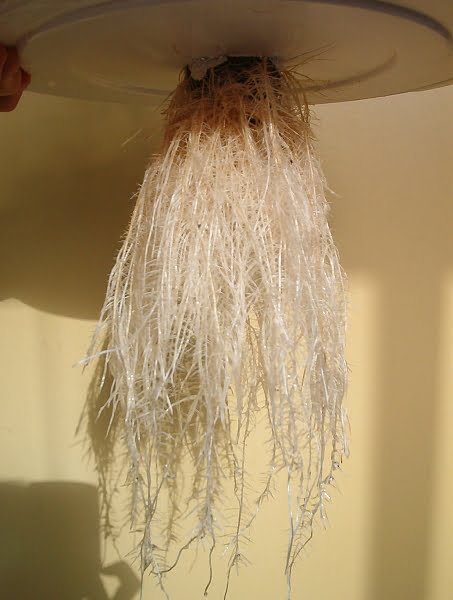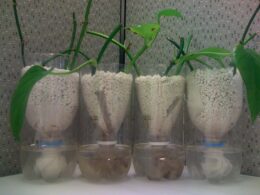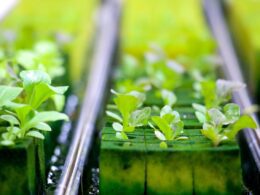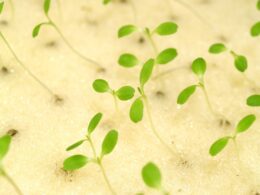Are you a new plant owner trying to figure out the best way to care for your green babies? One important factor to consider is the pH level of your water. pH measures the acidity or alkalinity of a substance, and it can greatly affect the growth and health of your plants.
But should you bother pHing your water before adding nutrients? Let’s explore the pros and cons, as well as some factors to consider, before making a decision that could impact the safety of your plants.
Firstly, it’s important to understand the role of pH in plant growth. Different plants thrive in different pH levels, and a deviation from their ideal range can result in stunted growth, nutrient deficiencies, and even death. pH can also affect the availability of nutrients in the soil, as certain nutrients are only soluble in specific pH ranges.
That’s why many experienced gardeners swear by pHing their water before adding nutrients, to ensure that the plants are getting the optimal pH levels for their specific needs. However, there are also some potential drawbacks to consider before making pHing a regular part of your plant care routine.
The Importance of pH in Plant Growth
Maintaining the proper acidity level is crucial for healthy plant development and growth. Soil acidity affects the availability of nutrients that plants need for survival. The pH level determines how well the plant absorbs these nutrients, so it’s important to maintain the right pH level in the soil.
Soil acidity plays a significant role in nutrient absorption. When the pH level is too high or too low, the nutrients in the soil are either unavailable or toxic to the plant. This can lead to stunted growth, yellowing of leaves, and even death.
By maintaining the right pH level, you ensure that your plants get the nutrients they need to thrive. To achieve the correct pH level, it’s essential to test your soil and adjust the acidity level accordingly. You can use pH meters or test kits to measure the pH level and add amendments to adjust it as needed.
By doing this, you’ll give your plants the best chance to absorb the nutrients they need for healthy growth and development. Don’t forget, soil acidity is crucial to a plant’s nutrient absorption, so it’s important to pay attention to it.
The Pros of pHing Your Water
It’s always a good idea to check the balance of your H2O to ensure your plants get the most out of their nourishment. One of the benefits of pHing your water is that it makes your nutrients more effective.
If your water is too acidic or alkaline, it can affect the way your plants absorb nutrients. By pHing your water, you can make sure the nutrients are being absorbed in the most efficient way possible.
Another benefit of pHing your water is that it helps prevent nutrient lockout. Nutrient lockout is when certain nutrients become unavailable to plants because the pH is too high or too low. This can cause stunted growth, yellow leaves, and other problems.
By pHing your water, you can prevent nutrient lockout and ensure your plants are getting all the nutrients they need to grow healthy and strong.
Overall, pHing your water is a simple step that can have a big impact on the health of your plants. By ensuring that your water is balanced, you can make your nutrients more effective and prevent nutrient lockout.
It’s a small investment of time and effort that can pay off in a big way. So next time you’re adding nutrients to your plants, be sure to pH your water first.
Is Distilled Water Necessary in Hydroponics if I’m Adjusting pH Levels?
In hydroponics, when adjusting pH levels, using distilled water is crucial. The uses of distilled water in hydroponics extend beyond pH adjustment, as it is free from impurities and minerals that could interfere with nutrient absorption. By solely relying on distilled water, you can ensure optimal growth and development of your hydroponic plants.
The Cons of pHing Your Water
Before adding nutrients to your plants, it’s important to consider the potential drawbacks of monitoring the pH level of your water. While pHing your water may have some benefits, there are also some cons that you need to be aware of.
Here are some potential drawbacks of pHing your water:
-
pH stability: When you pH your water, you may be creating an unstable environment for your plants. pH levels can fluctuate, and it can be difficult to maintain a consistent pH level. This can cause stress to your plants and make them more susceptible to disease.
-
Nutrient absorption: pHing your water can also affect the way your plants absorb nutrients. If the pH level is too high or too low, your plants may not be able to absorb the nutrients they need, which can lead to stunted growth and poor yields.
-
Time-consuming: pHing your water can be a time-consuming process, especially if you have a large garden. It can take a lot of time to test and adjust the pH level of your water, which can be frustrating and tiring.
-
Cost: pH testing kits and pH adjusters can be expensive, which can add up over time. If you’re on a tight budget, pHing your water may not be a feasible option.
-
Human error: pHing your water requires some skill and experience. If you’re not familiar with the process, you may make mistakes that can harm your plants.
Overall, pHing your water is not always necessary or beneficial. While it can help you maintain a stable pH level, it can also be time-consuming, costly, and risky. If you’re not sure whether to pH your water or not, it’s always best to do some research and seek advice from experienced growers. Ultimately, the decision to pH your water should be based on your specific growing conditions and the needs of your plants.
Factors to Consider
When considering how to optimize plant growth, there are important factors to take into account beyond just monitoring pH levels in your water. One factor to consider is the pH testing method you use. Different methods can yield different results, and it’s important to use a reliable and consistent method.
Additionally, different types of plants have different pH preferences, so it’s important to research the specific needs of your plants before adjusting the pH of your water.
Another important factor to consider is the quality of your water source. If your water is already within the appropriate pH range for your plants, there may be no need to adjust it. However, if your water is too acidic or alkaline, then adjusting the pH can be beneficial. It’s important to test the pH of your water source before making any adjustments.
Finally, it’s important to remember that pH is just one aspect of plant nutrition. While it’s important to maintain the proper pH level, it’s also important to ensure your plants are receiving the appropriate nutrients. If your plants are not receiving the proper nutrients, then adjusting the pH of your water may not be enough to promote optimal growth. Consider using a balanced nutrient solution in conjunction with pH adjustments to ensure your plants are getting everything they need to thrive.
Conclusion and Recommendations
So, you’ve learned about the factors to consider when deciding whether to pH your water before adding nutrients. Now, let’s wrap up this discussion with some final thoughts on pHing water and some tips for optimal plant growth.
It’s important to understand the impact of pH on your plants and how to maintain a balanced pH level for healthy growth. By following these tips, you can ensure that your plants are getting the nutrients they need to thrive.
Here are some recommendations:
- Use a pH meter or test strips to measure the pH of your water before adding nutrients.
- Adjust the pH as needed to ensure it falls within the optimal range for your plants.
- Consider the type of nutrients you’re using and their pH preferences.
- Monitor the pH regularly to ensure it stays within the optimal range.
- Adjust your watering schedule and nutrient dosage based on your plant’s needs and environmental conditions.
In conclusion, maintaining the proper pH level is crucial for healthy plant growth. By understanding the factors involved and following these tips, you can ensure that your plants are getting the nutrients they need to thrive.
Final Thoughts on pHing Water
You don’t want to risk your plants suffering from imbalanced nutrients, so make sure you take the time to properly adjust the acidity levels of your water.
pH testing accuracy can be crucial in ensuring that your plants receive the correct amount of nutrients. Using a pH meter or pH testing strips can give you an accurate reading of the pH level in your water, allowing you to adjust it to the optimal range for your plants. However, if you don’t have access to a pH meter or pH testing strips, there are alternative pH adjustment methods, such as using vinegar or baking soda, that can help you adjust the pH level of your water.
Final thoughts on pHing water? It may seem like a tedious task, but it can make all the difference in the health and growth of your plants. By taking the time to properly pH your water before adding nutrients, you can ensure that your plants are receiving the correct amount of nutrients and avoid any potential nutrient imbalances.
Remember, healthy plants lead to a bountiful harvest, so don’t skip this important step in your growing process.
Tips for Optimal Plant Growth
Now that you understand the importance of pHing your water, let’s talk about some tips for optimal plant growth.
One of the most important factors in plant growth is proper nutrition. Plants need a variety of nutrients to grow strong and healthy, including nitrogen, phosphorus, and potassium. However, the quality of your water also plays a role in plant nutrition.
When adding nutrients to your plants, it’s important to consider the quality of your water. If your water is high in minerals or other contaminants, it can affect the uptake of nutrients by your plants. This can lead to stunted growth or other issues.
So, before adding nutrients to your water, it’s important to ensure that your water is of good quality. You can test your water using a simple water test kit or by sending a sample to a lab for analysis. By ensuring that your water is of good quality, you can help your plants get the nutrients they need for optimal growth.
Frequently Asked Questions
What is the ideal pH range for plants to grow in?
To ensure optimal growth, it’s important to maintain the ideal pH range for your plants. The ideal pH range can vary depending on the type of plant, but generally falls between 6 and 7.
If the pH levels are too high or too low, it can negatively impact the growth of your plants. This is why pH testing is so important. An imbalance in pH levels can lead to stunted growth, yellowing leaves, and even plant death.
To avoid these issues, it’s recommended to regularly test and adjust the pH levels of your water before adding nutrients. By doing so, you can ensure that your plants are growing in the best possible conditions and achieve the desired results.
How often should I pH my water when adding nutrients?
When you’re adding nutrients to your plants, it’s important to keep an eye on your pH levels. pH fluctuations can have a big impact on nutrient uptake, which can affect the health and growth of your plants.
To ensure that your pH levels stay in the right range, it’s a good idea to regularly test and adjust the pH of your water using a pH meter. pH meter maintenance is also important to ensure accurate readings.
How often you need to pH your water will depend on a variety of factors, such as the type of plants you’re growing, the pH of your tap water, and the specific nutrients you’re using. As a general rule of thumb, it’s a good idea to test your pH levels before each watering and adjust as necessary.
By taking these steps, you can help ensure that your plants are getting the nutrients they need to thrive.
Can I use pH testing strips instead of a pH meter?
If you’re wondering whether you can use pH testing strips instead of a pH meter, the answer is yes. But keep in mind that the accuracy may not be as reliable. pH meters are designed to provide a precise pH reading, while testing strips can only provide a rough estimate.
If you’re looking for the most accurate reading, a pH meter is the way to go. However, if you’re on a tight budget or prefer the convenience of testing strips, they can still be a useful tool. Just be sure to use them correctly and take note of the limitations in their accuracy.
Ultimately, the choice between a pH meter and testing strips comes down to your personal preference and budget.
Are there any plants that don’t require pHed water?
If you’re looking for pH free plants, there are a few options out there. Succulents, cacti, and some herbs like rosemary and thyme are known to be more tolerant of a wider pH range in their soil. However, it’s important to note that while they may not require pHed water, they still benefit from proper watering and nutrient balance.
If you’re looking for alternative methods to pHing your water, there are pH buffer solutions and pH testing drops available as well. It’s always best to do your research on the specific needs of your plants and consult with a professional if you’re unsure.
Remember, providing the best care for your plants will lead to a healthier and more abundant harvest.
What are the long-term effects of not pHing my water before adding nutrients?
Not pHing your water before adding nutrients can have long-term effects on your plants. The pH level of your water plays a critical role in the absorption and availability of nutrients to your plants. Without a balanced pH, your plants won’t be able to take in the nutrients they need, which can lead to stunted growth or even death.
The effects of unbalanced pH can also affect the overall health of your plants, making them more susceptible to pests and diseases. That’s why it’s important to always consider the quality of your water and maintain a balanced pH level. By doing so, you can ensure that your plants receive the proper nutrition they need to thrive and grow to their full potential.
Conclusion
So, should you pH your water before adding nutrients to your plants? The answer is yes, it’s highly recommended.
pH plays a crucial role in plant growth and nutrient uptake, so maintaining the correct pH level is essential for healthy and productive plants.
By pHing your water, you can ensure that your plants are receiving the right amount of nutrients at the right time. It also helps prevent nutrient lockout, which occurs when the pH level is too high or too low, causing the plant to be unable to absorb the nutrients it needs.
In short, pHing your water is a simple yet effective way to ensure the success of your plants. So, don’t skip this important step in your gardening routine!









